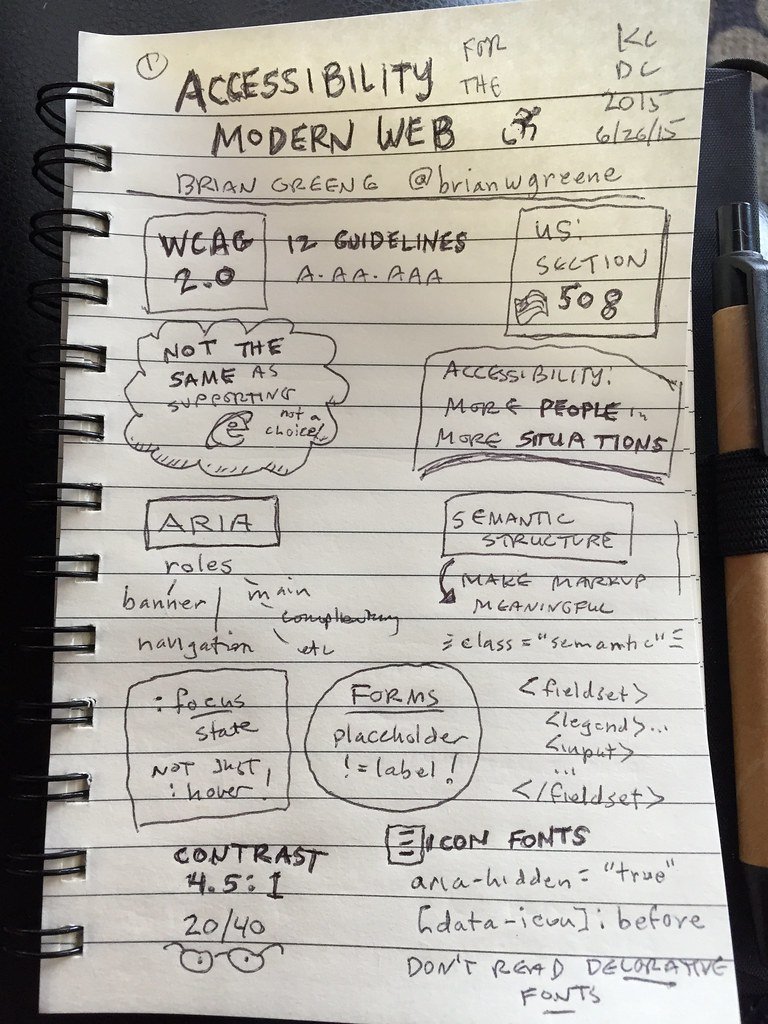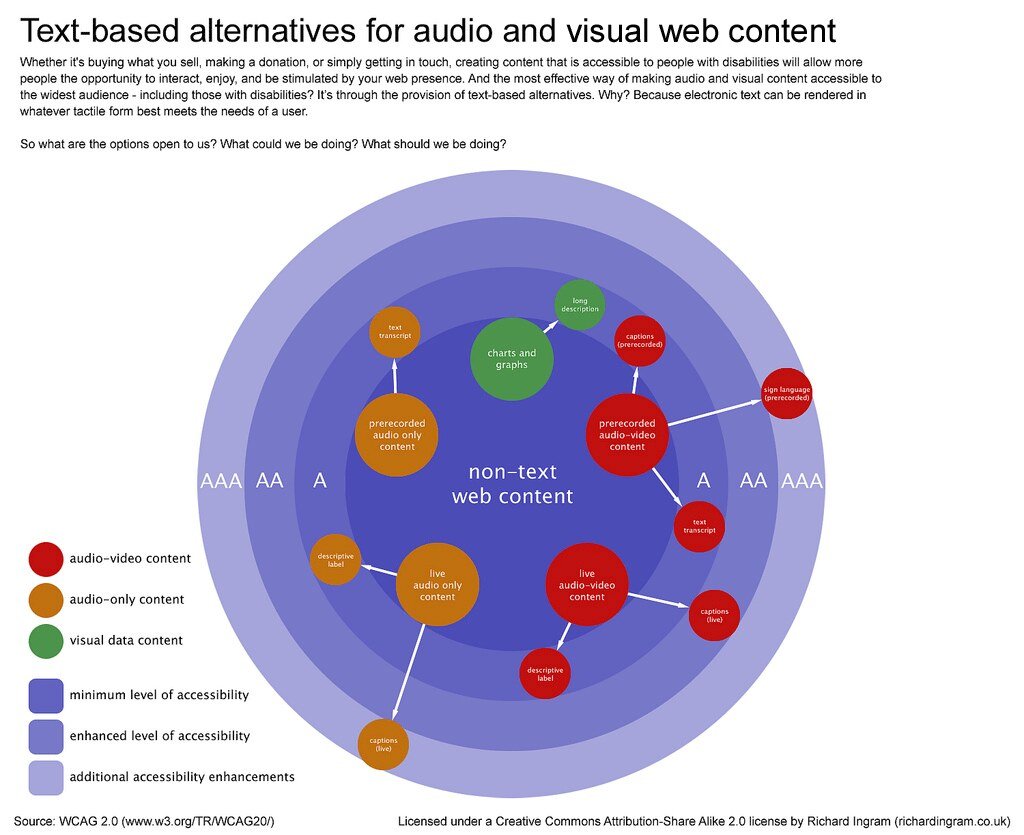In the boundless realm of the Internet, where connectivity knows no boundaries, a diverse tapestry of voices strives to be heard. Alas, in this digital cacophony, some individuals find themselves grappling with a virtual landscape that fails to embrace their unique needs. As the world becomes increasingly interconnected, the importance of web accessibility for users with disabilities cannot be overstated. Thus, a quest ensues to unlock the gates of online inclusion, empowering users with disabilities to navigate the vast plains of the Internet with ease and independence. In this article, we embark on a journey to understand the essence of web accessibility and explore the pivotal role it plays in revolutionizing the online experience for all individuals, regardless of their abilities. Join us as we delve into the mechanisms of empowering users with disabilities through web accessibility, uncovering the transformative power it holds to create a digital realm that truly leaves no one behind. 

Web accessibility is not just a trendy buzzword; it is a vital aspect of web development and design that aims to bridge the gap for users with disabilities. In today’s digital age, it is crucial to empower individuals with disabilities by providing them with equal access to information and opportunities online. As web developers and designers, it is our collective responsibility to ensure that websites and online platforms are inclusive and accessible to all.rnrn rnInclusive design holds the key to unlocking online inclusion. By adopting an inclusive design approach, we can create websites and digital experiences that cater to the diverse needs of users with disabilities. This means considering factors such as color contrast, text size, keyboard navigation, and alternative text for images. By implementing these accessibility features, we can make a significant difference in enabling individuals with disabilities to navigate and interact with websites independently and confidently.rnrnTo ensure equitable access, practical recommendations for web developers and designers are essential. Here are a few key considerations:rnrn1. Use proper HTML semantics: Structure your website using proper HTML tags such as headings, lists, and paragraphs. This helps screen readers and other assistive technologies understand the content better.rnrn2. Provide alternative text for images: Users with visual impairments heavily rely on alternative text (alt text) to understand images on a webpage. By including descriptive alt text, you can ensure that the meaning conveyed by the images is not lost to these users.rn
rnInclusive design holds the key to unlocking online inclusion. By adopting an inclusive design approach, we can create websites and digital experiences that cater to the diverse needs of users with disabilities. This means considering factors such as color contrast, text size, keyboard navigation, and alternative text for images. By implementing these accessibility features, we can make a significant difference in enabling individuals with disabilities to navigate and interact with websites independently and confidently.rnrnTo ensure equitable access, practical recommendations for web developers and designers are essential. Here are a few key considerations:rnrn1. Use proper HTML semantics: Structure your website using proper HTML tags such as headings, lists, and paragraphs. This helps screen readers and other assistive technologies understand the content better.rnrn2. Provide alternative text for images: Users with visual impairments heavily rely on alternative text (alt text) to understand images on a webpage. By including descriptive alt text, you can ensure that the meaning conveyed by the images is not lost to these users.rn rnrn3. Use clear and concise language: Keep your content simple and easy to understand. Avoid complex jargon or technical terms that might be difficult for users with cognitive or learning disabilities to comprehend.rnrn4. Prioritize keyboard accessibility: Some users cannot use a mouse or touchpad to navigate a website. Ensure that all elements on your website can be easily accessed and interacted with using only a keyboard.rnrnBy implementing these practices and embracing web accessibility, we can create a more inclusive online environment where users with disabilities can fully participate and engage. Together, let’s unlock online inclusion and empower users with disabilities to access and enjoy the limitless possibilities of the web.
rnrn3. Use clear and concise language: Keep your content simple and easy to understand. Avoid complex jargon or technical terms that might be difficult for users with cognitive or learning disabilities to comprehend.rnrn4. Prioritize keyboard accessibility: Some users cannot use a mouse or touchpad to navigate a website. Ensure that all elements on your website can be easily accessed and interacted with using only a keyboard.rnrnBy implementing these practices and embracing web accessibility, we can create a more inclusive online environment where users with disabilities can fully participate and engage. Together, let’s unlock online inclusion and empower users with disabilities to access and enjoy the limitless possibilities of the web.
Q&A
Q: What does “” mean?
A: It refers to the concept of removing barriers and creating equal opportunities for individuals with disabilities to access and engage with online content easily.
Q: Why is web accessibility important for users with disabilities?
A: Web accessibility ensures that people with disabilities can perceive, understand, navigate, and interact with online content effectively, allowing them to fully participate in the digital world and access information and services independently.
Q: What are some common barriers faced by users with disabilities in accessing the web?
A: Users with disabilities may encounter barriers like inaccessible website structures, poor color contrast, lack of alternative text for images, absence of captions for videos, and incomprehensible navigation features that hinder their ability to navigate or understand online content.
Q: How can web accessibility empower users with disabilities?
A: Web accessibility empowers users with disabilities by providing equal access to information and services, promoting independence and inclusivity, fostering educational opportunities, enabling employment prospects, and enhancing social engagement within the digital realm.
Q: What are some best practices for creating accessible websites?
A: Some best practices for creating accessible websites include using descriptive alternative text for images, providing captioning and transcripts for multimedia content, ensuring proper color contrast and font readability, utilizing clear and concise language, and implementing keyboard navigation compatibility.
Q: How can technology help in improving web accessibility?
A: Technology plays a crucial role in improving web accessibility through the development of assistive technologies like screen readers, voice recognition software, alternative input methods, and assistive navigational tools that facilitate user interaction and comprehension of online content.
Q: How does web accessibility benefit society as a whole?
A: Web accessibility benefits society by promoting inclusivity, diversity, and equal opportunities, as it allows individuals with disabilities to actively contribute to social, cultural, economic, and educational endeavors, resulting in a more equitable and cohesive society.
Q: Can web accessibility be achieved without significant costs or efforts?
A: Implementing web accessibility may require investments in time, resources, and expertise, but the long-term benefits significantly outweigh the costs. Moreover, designing websites with accessibility in mind from the start can reduce the effort and expense of retrofitting inaccessible content later.
Q: What legal obligations exist concerning web accessibility?
A: Various countries have laws and regulations, such as the Americans with Disabilities Act (ADA) in the United States, that mandate web accessibility compliance for certain organizations, institutions, and government entities to ensure equal access for all individuals, regardless of disabilities.
Q: How can individuals contribute to improving web accessibility?
A: Individuals can contribute to improving web accessibility by advocating for inclusive design practices, raising awareness about the importance of accessibility, participating in accessibility-related initiatives, providing feedback on inaccessible websites, and encouraging organizations to prioritize web accessibility. As we navigate the vast digital landscape, it is imperative that we foster an environment of inclusivity and accessibility for all. The advancement of technology has undoubtedly brought about remarkable improvements in various aspects of our lives. Yet, it is disheartening to witness the persistent barriers that hinder individuals with disabilities from fully participating in the online world.
In this article, we have embarked on a journey to unravel the complexities surrounding web accessibility and its pivotal role in empowering users with disabilities. We explored how instituting inclusive design principles, building robust assistive technologies, and enforcing stringent standards can revolutionize the digital experiences for those who have long been marginalized.
Web accessibility is not merely a legal requirement, but a moral obligation. It is a testament to the society we aspire to build - one that values and empowers every individual, regardless of their abilities. By acknowledging the challenges people with disabilities encounter and actively working to surmount them, we embark on a transformative path towards a more inclusive digital future.
As we draw the curtains on this enlightening exploration into web accessibility, let us remember that we all have a crucial role to play. Web developers, policymakers, designers, content creators, and users alike – we all hold the key to unlocking online inclusivity. Our collective efforts must transcend boundaries and strive for a seamless digital experience that beckons every user to explore, learn, create, and connect without limitations.
Together, let us embrace the power of technology as a catalyst for change. Let us forge a more inclusive online space that is free from exclusion, enabling individuals with disabilities to thrive and contribute their unique talents to the digital realm. By unlocking online inclusion, we empower users with disabilities and pave the way for a future where everyone can fully participate in the wonders of the virtual world.
So, as we venture forth into this immeasurable realm of possibilities, remember: web accessibility is not a luxury; it is a fundamental right. Let us champion this cause and create a digital landscape that reflects the true diversity of our society. Only then can we truly say that we have unlocked the limitless potential of online inclusion.

